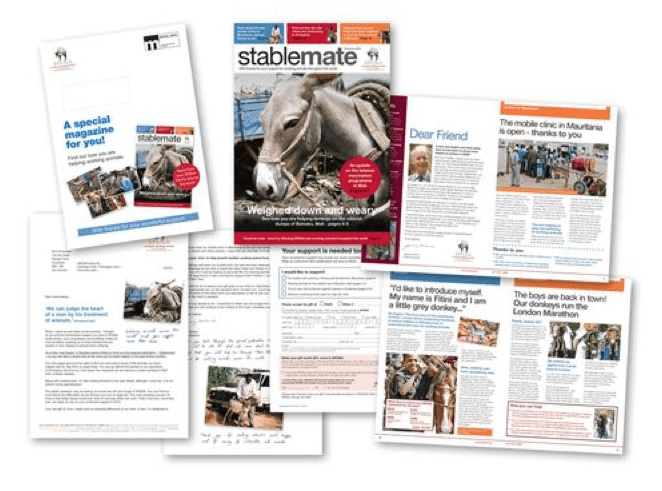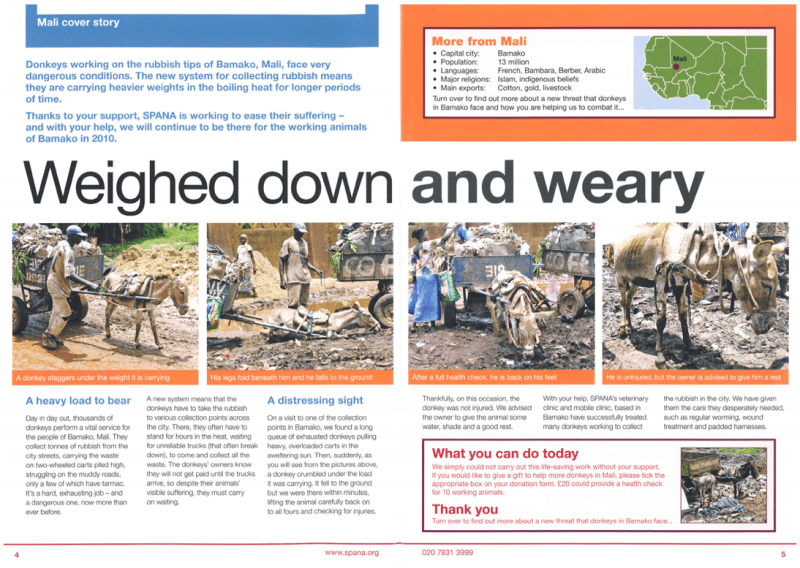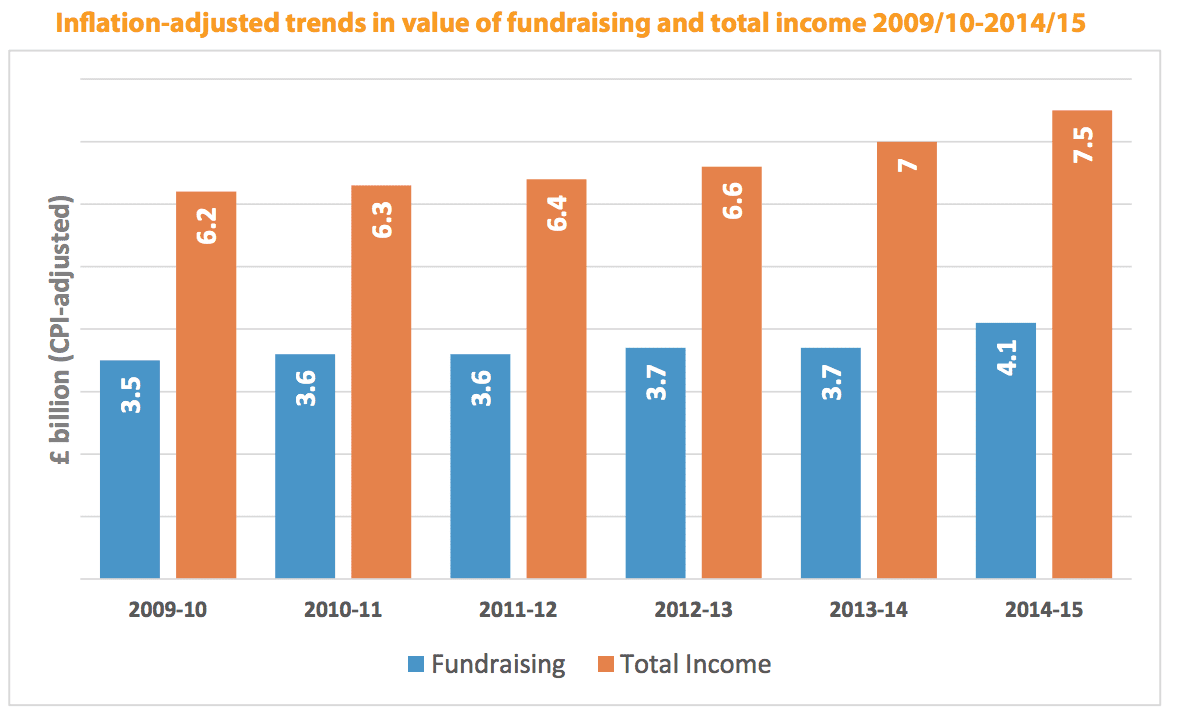How to supercharge your charity newsletter
When it comes to charity communications, I've long thought magazines and newsletters are a waste of time. In comparison to appeals, they don't bring in much money and research into evaluating their impact points to the same inevitable conclusion – donors say that they quite like receiving them but they rarely get around to anything more than having a quick flick through.
As a result, I’ve often recommended consigning the newsletter to the bin and using the money to provide real feedback to donors – photographs of people being helped accompanied by copies of the reports, drawings, plans or press cuttings that a great project can throw up.
When coupled with a highly personalised letter, you have a communication that doesn’t just offer insight, it can also raise a substantial amount of money too (you can see a rather good award winning example of this approach here).
It’s micro-marketing versus macro-marketing. Real feedback is a one-to-one communication, whereas a magazine is always something that the recipients know is going to everyone on a mailing list.
Real feedback makes a donor feel special. It puts them on the inside track. In tests I’ve seen it generate more money than appeals and when it comes to research, donors rave about it.
To me, it was always an obvious choice. But it was hard to dislodge the magazine or newsletter. Its defenders offered a surprisingly long list of reasons for its retention: it offers a different type of interaction, it educates the donor, it allows the charity to accurately demonstrate its breadth and purpose, it’s a cost-effective means to thank volunteers, corporate partners and activists, it shows why we are ‘different’ and – my personal favourite – it’s an important part of the brand.
All reasons were valid. But so what? If donors aren’t moved to give, what’s the point? If an educated donor with a full and detailed understanding of your organisation and your brand doesn’t put their hand in their pocket and support you, maybe, just maybe, something’s going wrong?
And that became our starting point for looking at charity magazines and newsletters from a different perspective. The commercial variety is obviously extremely popular. Millions are sold every day to people who value the content so much that they are willing to pay for it.
Which left us asking what might charity donors value so much in a magazine or newsletter that they would respond with a donation?
The answer was simple – we’d tell the donors what the charity had done with their gifts.
This is a central component of great direct mail appeals. By talking about the donor as partners and sharing the impact of their financial support, we raise significantly more than if we just rattle on about needing more money.
In addition to this, we’d show that there was continuing need in the areas the donor has already supported.
We’d also personalise the whole package as much as possible.
And rather than assuming that donors would brew up a pot of tea and settle down to spend an evening reading a publication from cover to cover, we’d use good direct marketing techniques to ensure even someone just flicking through the publication would understand the important role they had in the charity.
And perhaps most importantly, we looked to see what we could learn from best practice in the fundraising industry and started looking for case studies on the web. Within a few clicks we had stumbled on Tom Ahern and suddenly started to understand that we might not just be able to raise a little more through reconstructing a charity newsletter. We could actually make much, much more!
If you know Tom, you’ll understand where I’m coming from. If you haven’t, let me explain a little more about him. He’s a great advocate of fundraising newsletter and magazines because he’s seen just how much money they can raise. He’s written a large number of articles and books where he shares his success. And he doesn’t just make claims. He backs up what he says with evidence. And some of the evidence he offers is jaw dropping. He cites the example of the charity newsletter that raises ten times as much income because they changed half a dozen things about their approach. That’s just one example. There are many others.
Reinforced by Tom’s experience – and now with a few of his great ideas to add to our own – we started work on testing to see if a newsletter could be made more profitable. One of our innovative clients, SPANA – a charity that works in some of the poorest countries, improving the lives of working animals and the people who depend on them – decided to give it a go. They had a pretty good publication in SPANA News. As it already generated a healthy return, we nervously put together projections that we would double income.
Once that was accepted, we set about work.
In terms of content, we wanted to feature news rather than a series of general articles about the work and approach of the charity. As a result, we made a decision to feed back on every project the donor had been asked to support in the previous year. We would show them what their gifts had achieved and give tangible examples of how they could support working animals and their owners at each featured project.
This would allow us to show the donor that we saw them as our most important partner. We would demonstrate that without them, the work they valued couldn’t go ahead.
But more importantly, we wanted them to feel fantastic about what they had made possible and understand that the more they gave, the more SPANA could do.
As a result, everything was aimed at giving the donor an emotional buzz. Every story, anecdote and statistic was included to appeal to the reader’s emotions. We know that when it comes to giving, the rational mind doesn’t really have much say in the decision. That’s why from the front cover to the back, the publication was about appealing to the donor’s heart.
It was called Stablemate. A name chosen to define the donor’s relationship with the charity. The front cover thanked them and directed them to the projects they had helped fund.
It was shorter than SPANA News. Rather than replicate the original 28 page publication, we looked at how many pages we needed to get over our key messages and found 16 would be ample. We found ourselves scratching our heads about what we would include if we increased pagination even to 20 and, as a result, decided to stick with the space we needed rather than what was available.
The content was heavily ‘You’ focused. That meant that each article regularly and directly referred to the donor as being responsible for the work that was featured.
Through the use of headlines, sub-heads, pull quotes and feature boxes, the key facts of each story could be absorbed in a few seconds. Pictures were also used to summarise the article.
Take the cover story for instance. This story featured a dramatic series of shots, taken of a donkey collapsing under the weight of an overloaded rubbish cart in Bamako, Mali.
As well as covering insights taken directly from people working at the project, we also took into account what a donor might feel when looking at each page and gave them the opportunity to do something to help. The Bamako story, for example, showed exactly what was required and what it cost to inoculate a donkey against tetanus.
We also made giving easy. The donation form directly related to the examples included in the magazine and we offered donors choice in how their gifts were spent. They could earmark the gift if they chose or allow SPANA to decide how it should be allocated. Offering donors an opportunity to say exactly how their gift is used really engenders trust and a surprisingly small number of people choose to restrict their donations.
Supporting it all was a highly personalised letter, highlighting the stories that we knew donors would be interested in, based on looking at their giving history. And everything was sent out in an envelope rather than a self-mailer or polythene bag.
Once written and designed, we had a nervous few weeks when everything went to print and the finished packs were mailed. Then the results came in.
You’ll remember that our promise was that we would double the income from the previous year’s newsletter. I’m incredibly pleased to say that we beat that target.
The first copy of Stablemate generated income that exceeded that raised by most normal direct mail appeals!
As a result, I’ve started to change my mind about charity magazines and newsletters. I still think that many are waste of time and money. But that’s not because I don’t like them as communication vehicles. It’s because I now appreciate that just in every other walk of life, you have bad examples and good ones. Bad ones don’t engage and don’t raise much money, good ones might just be the best fundraising tool we have available to us today.
Times are tough and things look like they might get tougher. If you have got stiff targets to reach and are wondering what the next great fundraising idea might be, can I suggest that the answer to your problems might be right under your nose, in the pages of your charity newsletter.
This was originally written for Civil Society magazine. You can find the article along with loads of other great fundraising information here.
Tags In
Related Posts
1 Comment
Comments are closed.
The Essentials

Crack the Code to Regular Giving: Insights, Strategies, and a Special Giveaway!

‘Tis Halloween. Keep to the light and beware the Four Fundraisers of the Apocalypse!

Why do people give? The Donor Participation Project with Louis Diez.

A guide to fundraising on the back of a postcard

What does the latest research tell us about the state of fundraising?









Hi Mark – great post. I was wondering how Stablemate (and the previous incarnation of th newsletter) asked for donations and what response mechanism was provided?